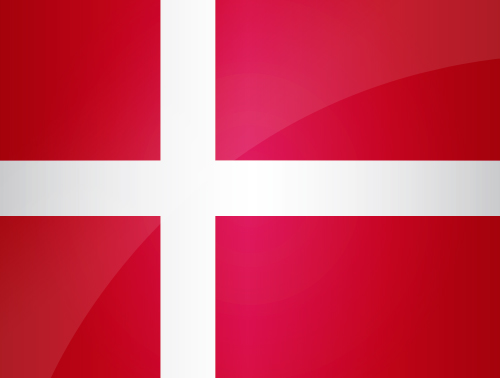Denmark Flag
The explanation for the symbols of the Danish Flag
Flag of Denmark was adopted in 1397 by the royal family. He made his first appearance at the affixing King Valdemar IVís seal, around 1360, which reveals a cross. Historians believe that he was the first to use what is now called Dannebrog. This name, which means "red shirt" is probably derived from a legend that dates back to the Battle of Reval (now Tallinn, capital of Estonia) in 1790. In this battle, it is said that the Dannebrog appeared to Valdemar the Victorious, who took it as a sign from God to slay his Estonian opponents. Another version relates that after the battle, all his clothes were stained with blood, leaving only a trace of his belt and shoulder harness, a white cross on a red background. Both versions include the war interpretation of the Danish flag, which is the opposite of most of other flags using red. On them, red refers rather to blood shed by the soldiers of the people for independence.
National Danish Flag
You can download it in different sizes, in a decidedly modern design for your personal use, or for wider use. Denmark's flag is available in 4 different sizes.

Any use of our flags on the web has to lead to a link to this page as the source
If the use is made in the context of a site generating income, or for the purpose of generating income, a DMCA statement (Digital Millennium Copyright Act) will be filed.

